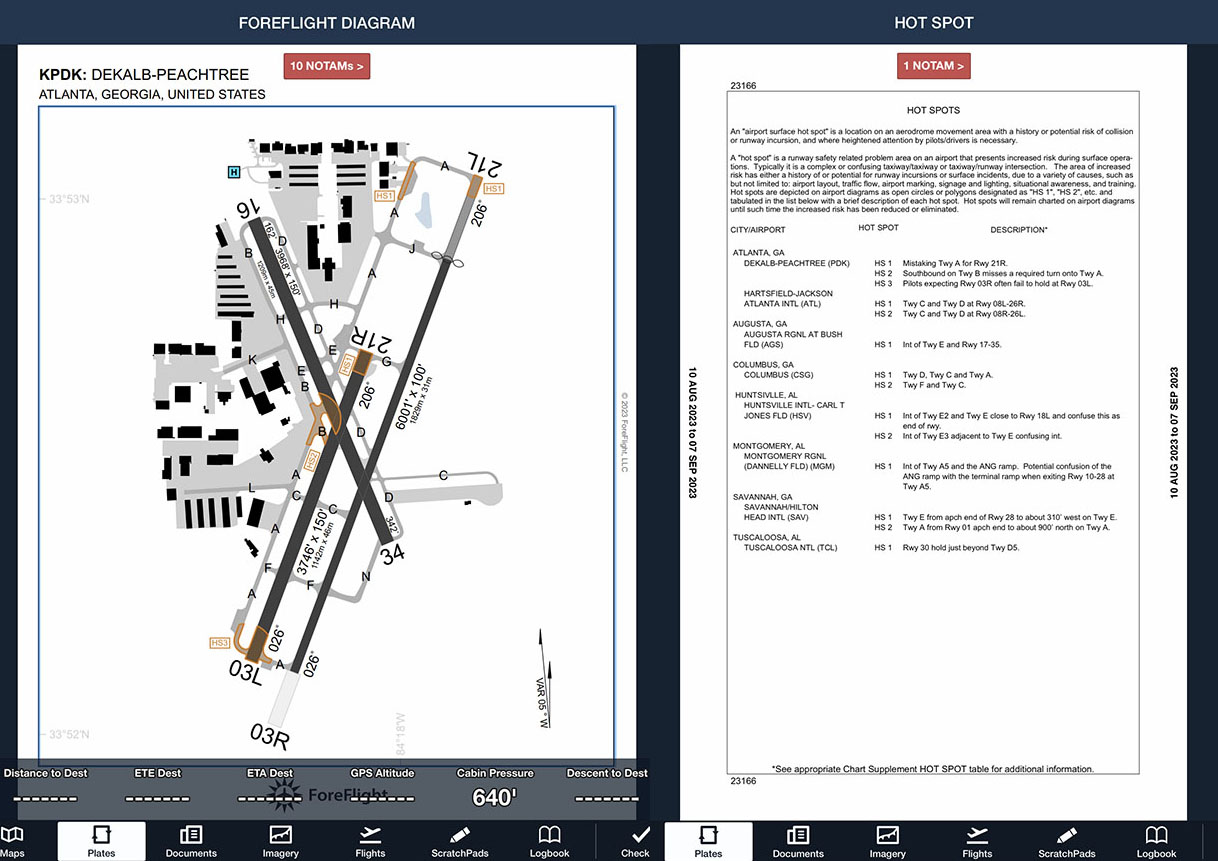Overlooked tools for learning about an airport in ForeFlight
|
Getting your Trinity Audio player ready...
|
Flying to a new airport can be an intimidating experience, but with a little time spent studying ForeFlight you can learn a lot and enjoy a safer arrival at Big City International. (It should go without saying that this preparation should take place before you buckle into the left seat.) This means more than just checking the runway layout and the tower frequency, though; in recent years, a number of new resources have become available. Here are five to check out.
The Airports tab in ForeFlight is packed with information about runways, weather, and NOTAMs. These are all important—but don’t overlook the Procedure section. Many VFR pilots assume this is only for instrument approaches, but it’s actually the place to find helpful resources for pilots of any type. Especially at busier airports, this is essential reading. Go to Airports -> Procedure -> Airport.
You’ll find familiar options like the airport diagram here, but keep digging and you might find some new options. The Hot Spot option shows areas where runway incursions are common, and should get extra attention both before the flight and while taxiing. These are not available for all airports, but if a hot spot diagram is available then it was created for a reason—HS2 in the picture below is a notoriously tricky turn for anyone who has ever flown into PDK. Note that ForeFlight displays both a diagram (with orange areas) and a textual description. If you want to go a step further, you can circle or annotate your regular airport diagram based on these warnings.
If runways or taxiways are closed for construction, especially if it’s for an extended period of time, you’ll find a Construction Notice as well. This is like a long term NOTAM, and shows which areas are closed and an expected start/finish date. At some large airline airports there can be dozens of small taxiways closed, and reviewing this chart is much easier than scrolling through hundreds of lines of NOTAMs.
Arrival Alerts are a relatively new resource developed by the FAA: “To address wrong surface events where an aircraft lines up to, lands on, or departs from the incorrect runway, taxiway, or airport, the FAA is releasing Arrival Alert Notices at several airports with a history of misalignment risk.” Like a Hot Spot chart, if one of these exists you should pay attention—pilots like you have made this mistake.
For a more interactive view of the airport, ForeFlight offers a powerful 3D View at the top right corner of the Airports page. This feature, which requires a Performance Plus subscription, allows you to preview your approach to any runway, complete with satellite pictures of the area. You can pan around, zoom in, and even see current traffic conditions in the area.
Finally, don’t forget the value of other pilots’ opinions. ForeFlight is loaded with this information, so much so that pilots are often confused about the options. There are actually three places to read about an airport: Remarks, Comments, and FBO Comments. The first two are accessed by tapping the Comments button at the top right corner of the Airports page. Remarks are FAA notes about the airport, including noise abatement procedures, weight restrictions, and operating hours. Comments are submitted by pilots, and offer invaluable tips about clearance delivery frequencies and nearby restaurants. FBO Comments are accessed by tapping the FBOs button at the top right, then the Comments menu option. These are FBO-specific PIREPs, so often relate to service quality, parking fees, and crew cars. All three of these options provide helpful information for planning where to go on the airport and what to do after you shut down.
Do you have a favorite resource for evaluating airports? Add a comment below to share your tip.










Great information as to getting more information about airport you may not have been to before.
Don’t forget about the Chart Supplement, which is still indicated as the A/FD (Airport/Facility Directory) on the INFO tab. I find that many pilots, even professional pilots I work with, have forgotten about the Chart Supplement. Its a wealth of great information, especially to uncontrolled fields where the information in the procedure charts are lacking. I look at this for every airport I am planning for.
Is there any correlation between Foreflights Remarks and the A/FD information?